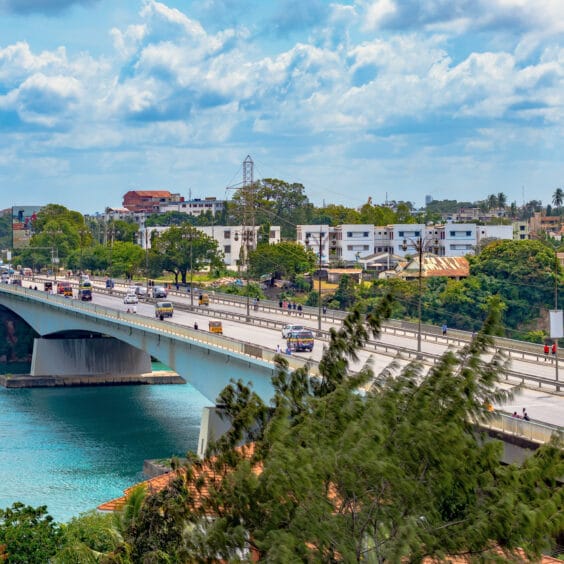Component 1
Project and program preparation and approval for international and national public sector and blended financing
Project preparation is the process of translating investment needs into specific projects that are ready for financing and implementation. While identifying NDC investment needs, countries pinpointed specific projects and activities at various stages of the investment cycle.
To move projects from the idea stage to a state of readiness for implementation, consider the identified source of potential financing and whether there is a need for technical or analytical support in developing these investments.

Step 1
Determine the required project preparation steps
Before detailed project preparation begins, consider the distinct standards of different financing sources. In most cases, involving potential funders from the outset is advisable. MDBs/DFIs, for example, may assist with or lead the project preparation process. Private-sector projects sometimes involve investors who prefer handling project preparation steps themselves. In such cases, the analysis outlined below can inform initial discussions with private-sector financiers about investment options before they proceed with due diligence and project preparation. In other cases, RFPs will help to engage private-sector financiers (please refer to Stage 4, Component 3).
Example: In Rwanda, project planning aligns with national strategies, including the NDC implementation framework. Ministries propose investments, which, if approved by the Ministry of Finance and Planning, enter the Public Investment Management System for tracking. The process involves preparing a concept note outlining the investment’s rationale, framework, and socio-economic impact. If approved, a pre-feasibility study follows, expanding on the concept note. A final feasibility study rigorously assesses technical, economic, and financial viability. Based on this analysis, the government makes a go/no-go investment decision.
Step 2
Seek project preparation support as needed
Developing a climate finance proposal for public or blended finance will often require a set of studies such as feasibility, environmental, and social-safeguard studies, risk assessments, and other analyses that are an integral part of the proposal. Countries and project proponents may face capacity constraints in developing these technical documents and may need to seek financial and technical assistance from Project Preparation Facilities (PPFs) and specialized partners. The country should identify the project proponents responsible for overall and specific components of project preparation. Additionally, it should identify how this process will be funded and whether technical assistance is needed.
Example: In Uganda, NDC Partnership support focused on developing guidance on how the government can leverage climate finance to support green recovery. To do so, the government prepared a database of climate-related projects, analyzing their level of bankability and providing recommendations on resource mobilization from different funding sources.
Step 3
Project preparation
Project preparation should only occur if there is a plausible strategy for funding, even though the exact funding source and structure will be determined through this step.
The project preparation cycle will generally include the following:
- Prefeasibility study: An initial assessment of the project that includes its objective, scope, alternatives, an analysis of those alternatives, and a preliminary identification of the project’s affordability (value for money).
- Technical configuration: The technical solution needs to be fully developed, including the specific technologies, standards, technical design, project location, and required resources for the project delivery. Technical experts should prepare the project design, and external review processes should be conducted.
- Feasibility study: Once the full technical design has been prepared, feasibility studies need to be conducted to review the design, consider the project’s impact, and identify any relevant risks. Feasibility studies may include financial/economic feasibility, as relevant to the project.
- Project governance and risk allocation: The project governance and ownership structure should be determined, including how fiduciary liabilities will be shared between the government and other investors. At this point, decisions about whether the government will deliver the project directly or whether a public-private partnership or private investors will be involved must be made.
- Policy and legal review: The relevant legal and policy framework in which the project will be delivered must be reviewed and the design adjusted accordingly. Key policy and legal risks should be identified, and the project structure should be adjusted if necessary.
- Costing and budget preparation: Project budgets need to be prepared by identifying and planning each activity and input required for the project and determining the cost of activities and inputs using previous comparable projects as a benchmark. Budgets should be prepared using headings matching the implementation agency’s reporting and audit requirements.
- Gender, social, and environmental impact analysis: A gender, social, and environmental impact analysis should be conducted to identify, avoid, mitigate, or minimize adverse gender, social, and environmental impacts as well as increase positive outcomes in these dimensions.
Once the project preparation is complete, the climate finance/investment proposal can be submitted for approval to the finance partner. The approval process may involve certain technical conditions or questions to be addressed by the project proponents. These may require further support or technical assistance, so it is important to incorporate a budget for this contingency.
Example: As part of the Project Checklist Initiative, the NDC Partnership is assisting the Government of the Maldives in identifying projects with funding potential from diverse sources and enhancing their preparation to achieve bankability. This effort aims to help the Maldives secure the necessary financing for critical NDC-aligned investments.
Support resources
The following resources can be considered. Explore the NDC Partnership Knowledge Portal Climate Toolbox for additional project and program preparation and approval for international and national public sector and blended financing resources.
